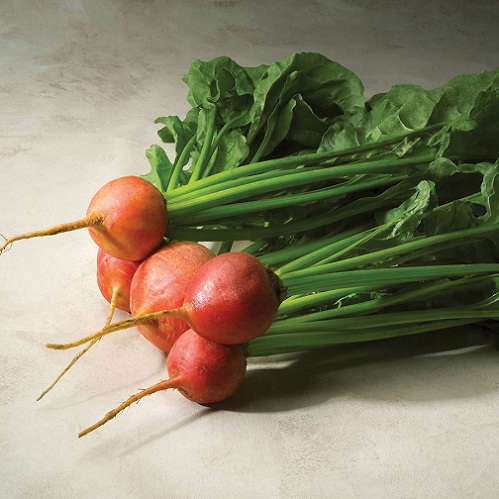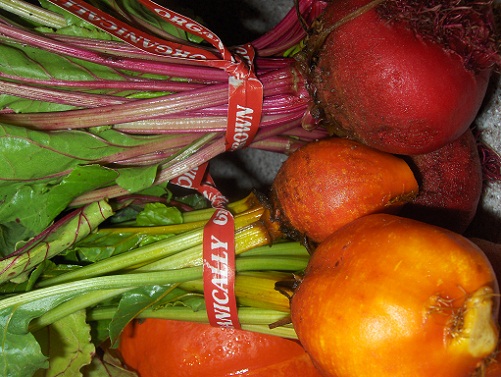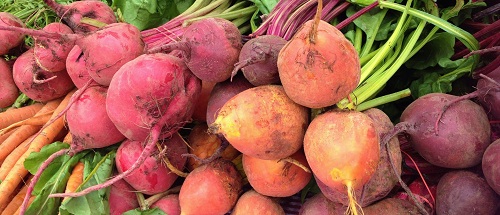|
Originating on Mediterranean shores, the beet has made itself at home in many locations, including Connecticut. The more common deep wine red, beta vulgaris, has a very close cousin who dresses in a regal golden color. One has to wonder if these richly colored roots are particularly shy given how they hide in the ground. The vibrant beet greens are also edible. In fact the vegetable was initially cultivated solely for those greens. Shy or nay, the beet gets around, from the farmyard, to textile mills, to the table. For eons, the root was used primarily to feed livestock and to color everything from other foods like eggs and sauces to fabrics and wood stains. Beet juice is still used to intensify the color of pizza and pasta sauces, stews and jellies. One cannot, however, dismiss the beet’s exquisite contribution to the tabletop, nor its manners while there. This root is best steamed or roasted, which intensifies its rich flavor. Yet the beet doesn’t seem to recognize a single, confined role. It is happy to open the meal, play understudy, be a companion or take a starring role of dessert. It has been regularly pickled. The ever-inventive denizens of kitchens everywhere have produced beet tartare, beet hummus, beet chips and beet flans. The sweet dense flavor plays very with others, particularly with apple, basil, chives, cream, feta cheese, honey, lemon, mint, orange, parsley and is willing to be friends with others. In previous columns, we’ve provided a number of beet recipes, including: Roasted Beets with Feta and Chives, Purple Pasta, Beet Gratin, Beet Hummus, and Beets with Chévre and Pistachios, all of which may be found on the web site. Today our offering is a Golden Beet Flan, which works well for a lunch main course or an appetizer.
0 Comments
Leave a Reply. |



